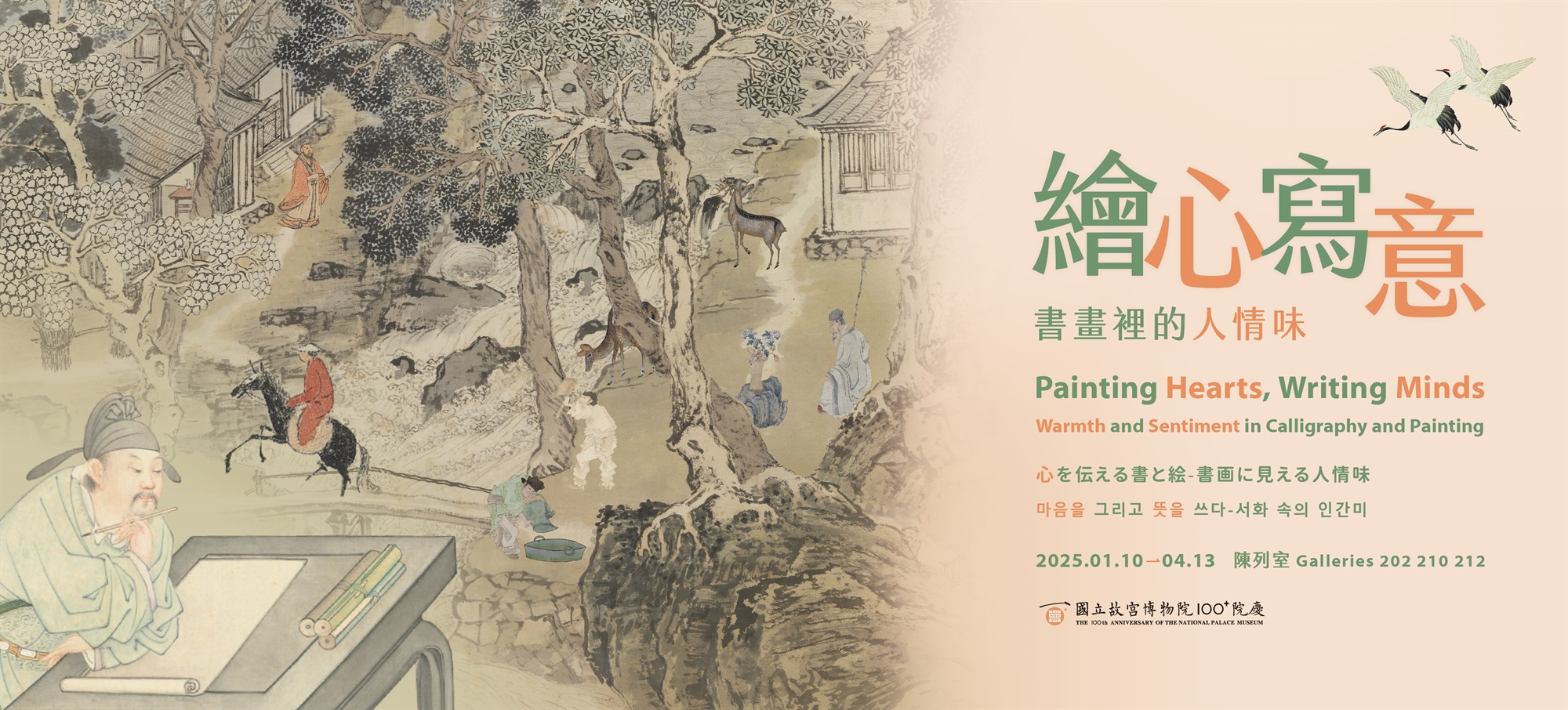Farewells Before Long Journeys
-
Farewell Poetry at Fengcheng
Wang Fu, Ming dynasty
PaperWang Fu (1362-1416) most likely painted this work as a gift for a colleague in service at the Imperial Hanlin Academy who was preparing to return home with honor and accolades. The foreground depicts the flats beside a river. There, in a small ramada nestled behind the riverside boulders and trees, three individuals sit around a table enjoying a farewell banquet. Near the riverbank floats a loaded skiff waiting to depart and begin its passenger’s long journey home. Overlapping mountain peaks can be discerned in the distance, the veins running through their rocky surfaces painted with writhing, crisscrossing texturing strokes. The ink washes are neither pale nor dark, creating an effect that is both delicate and luscious. The negative space at the top of the painting is filled with numerous poems of farewell. The poetic allusions they contain inform us that this friend’s departure took place in the autumn.
Not only is this painting filled with the reluctant sentiments that arise when saying goodbye to a friend, it also sheds light on the cultural significance of gifts of poetry and paintings exchanged between members of the literati in ancient times. During the Ming dynasty, bestowing a departing friend with a painting was a very popular custom—this piece is a classic example of a work of art intended for this purpose.
-
Imagining of Huang Gongwang’s “Autumn Mountains”
Wang Yuanqi, Qing dynasty
PaperWang Yuanqi (1642-1715), who had the style name Maojing and the sobriquet Lutai, was a talented landscape painter. He is often named alongside his paternal grandfather Wang Shimin (1592-1680) as well as Wang Jian (ca. 1609-1677) and Wang Hui (1632-1717) as one of the “four kings” of Qing dynasty landscape painting (this appellation is a pun—the surname Wang literally means “king”). The inscription on this painting tells us that Wang Yuanqi actually never laid eyes on Huang Gongwang’s (1269-1354) “Autumn Mountains.” Rather, this painting was Wang’s imaginative endeavor to use his brush to paint an homage to what he thought Huang’s painting might have looked like. He painted it as a parting gift for a friend.
This painting’s mountainous topography begins with the slopes in the near ground and continues far into the distance. Mists encircle the massifs, which are densely forested with an abundance of lush trees, just as a waterway winds and coils its way through the valley. Wang used a gracefully understated selection of blues, greens, and ochres as he gave color to the mountains and boulders, while adorning the trees with leaves of autumnal crimson. These techniques fill the work with a rich panoply of color while lavishing the scene with vitality.
-
Landscape after the Style of Wang Meng
Chen Shu, Qing dynasty
PaperChen Shu (1660-1736) was first known by the sobriquet Shangyuan Dizi (“Disciple of the Supreme Origin”) and late in life by the sobriquet Nanlou Laoren (“Elder of the Southern Tower”). One of the Qing dynasty’s most famous female painters, she painted landscapes based on her studies of Yuan dynasty artist Wang Meng’s (1308-1385) works. Chen painted this piece when she was in her autumn years. It was later bestowed by her grandson Qian Rucheng (1722-1779) as a gift to an official who had come to Beijing to appear before the emperor. It was given to this official as his farewell gift shortly before he returned to his post.
This painting depicts soaring peaks in a lofty mountain range, with a waterfall coursing down from one of the summits and pine trees growing densely amid the foothills. The massifs were outlined with dense, fine linework and accented with “moss spots” using dark ink. Chen’s brushwork is softly continuous and her style exquisitely delicate. The painting features a solitary figure at the riverside gazing into the spring water, an element that accords with the poetic inscription accompanying this work.


